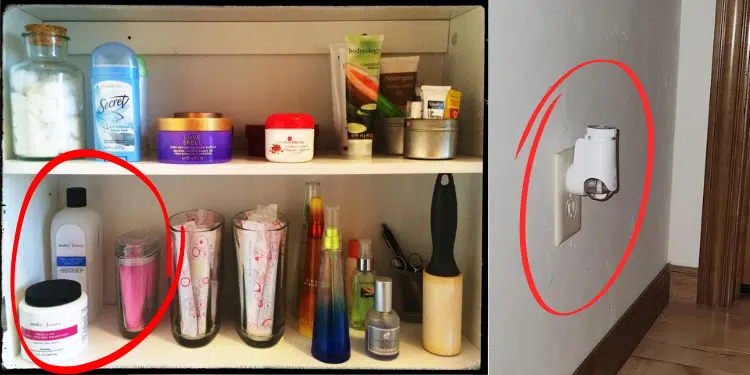Your home is meant to be a safe haven, but it might also harbor hidden dangers that could impact your health.
Some of the everyday items we use or encounter in our homes contain chemicals and toxins that are linked to an increased risk of cancer.
Fortunately, by identifying these risks and making a few changes, you can significantly reduce your exposure.
Here are some of the most common household items and practices that could pose cancer risks, and tips on how to eliminate them.
1. Cleaning Products with Toxic Chemicals
Many conventional cleaning products contain harmful chemicals like ammonia, formaldehyde, and phthalates. These substances can release volatile organic compounds (VOCs) that pollute indoor air and increase cancer risks.
What You Can Do:
- Switch to natural, non-toxic cleaning products. Look for brands labeled “green” or “eco-friendly.”
- Make your own cleaning solutions using ingredients like vinegar, baking soda, and lemon.
2. Non-Stick Cookware
Non-stick cookware, such as Teflon, contains chemicals like per- and polyfluoroalkyl substances (PFAS), which can release toxic fumes when heated. Studies have linked prolonged exposure to PFAS with cancer and other health issues.
What You Can Do:
- Opt for stainless steel, cast iron, or ceramic cookware instead.
- Avoid cooking at excessively high temperatures with non-stick pans.
3. Air Fresheners and Scented Candles
While they make your home smell pleasant, many air fresheners and scented candles emit harmful chemicals like benzene and toluene, which are known carcinogens.
What You Can Do:
- Use essential oils and a diffuser for natural fragrances.
- Choose unscented or naturally scented candles made from soy or beeswax.
4. Plastic Containers
Some plastic containers, especially older ones, may contain bisphenol A (BPA) or phthalates, which can leach into food and beverages. These chemicals are associated with hormonal disruptions and cancer risks.
What You Can Do:
- Use glass or stainless-steel containers for food storage.
- Avoid microwaving food in plastic containers.
5. Pesticides and Herbicides
Many pesticides and herbicides used in gardens and lawns contain chemicals that have been linked to cancer. Even indirect exposure, such as tracking chemicals indoors on shoes, can pose risks.
What You Can Do:
- Opt for natural or organic pest control methods.
- Remove shoes before entering your home to prevent chemical residue from spreading.
6. Furniture and Carpets
Some furniture, carpets, and rugs are treated with flame retardants or stain-resistant chemicals that release carcinogenic compounds into the air over time.
What You Can Do:
- Look for furniture and carpets labeled as “chemical-free” or “low-VOC.”
- Regularly ventilate your home to reduce indoor air pollutants.
7. Processed Foods and Packaging
Highly processed foods often come in packaging containing harmful chemicals like BPA or PFAS. Additionally, these foods may contain additives and preservatives linked to cancer.
What You Can Do:
- Prioritize fresh, whole foods over processed options.
- Choose brands that use safe, BPA-free packaging.
8. Radon Gas
Radon is a naturally occurring radioactive gas that can seep into your home through cracks in the foundation. Long-term exposure to radon is a leading cause of lung cancer.
What You Can Do:
- Test your home for radon using an inexpensive test kit.
- Seal cracks in your foundation and improve ventilation in basements.
9. Personal Care Products
Shampoos, deodorants, and cosmetics often contain parabens, phthalates, and synthetic fragrances that may increase cancer risks with prolonged use.
What You Can Do:
- Switch to natural, organic personal care products.
- Read ingredient labels and avoid products with harmful additives.
10. Tap Water
Tap water can contain contaminants like chlorine, lead, or pesticides, which have been linked to various health issues, including cancer.
What You Can Do:
- Use a high-quality water filter for drinking and cooking.
- Test your tap water to identify specific contaminants.
While it’s impossible to eliminate all risks, taking steps to address these hidden dangers in your home can greatly reduce your exposure to potential carcinogens.
Small changes, like switching to natural products, filtering your water, and improving ventilation, can protect your family’s health and give you peace of mind.
Take action today and turn your home into a truly safe haven.

